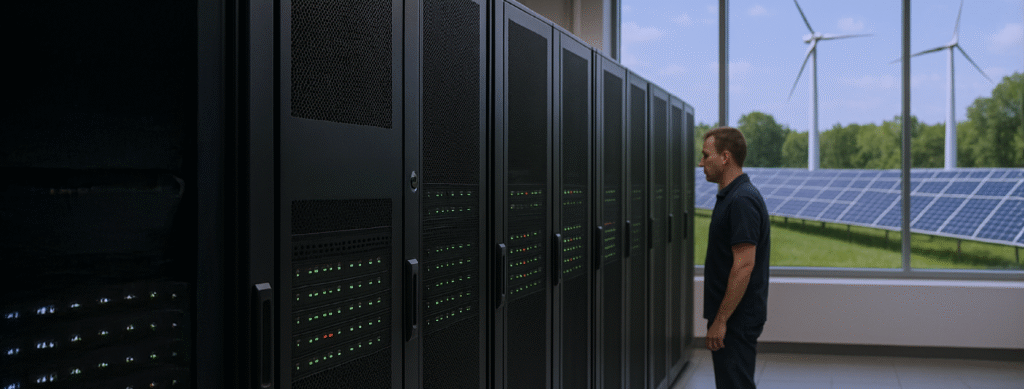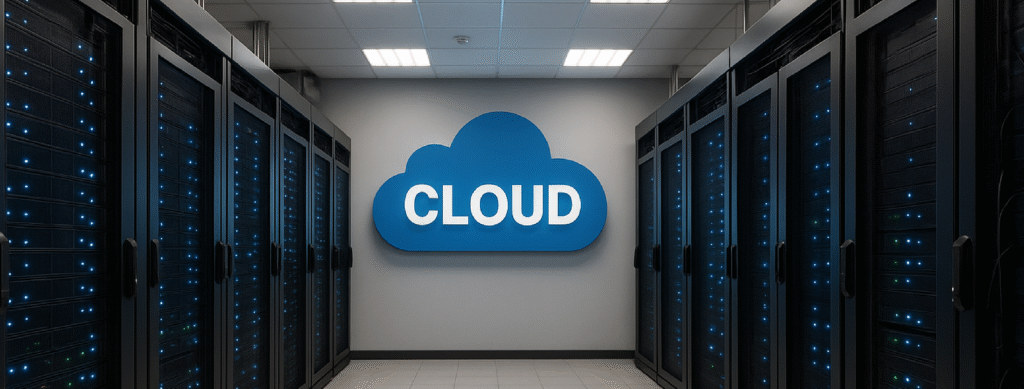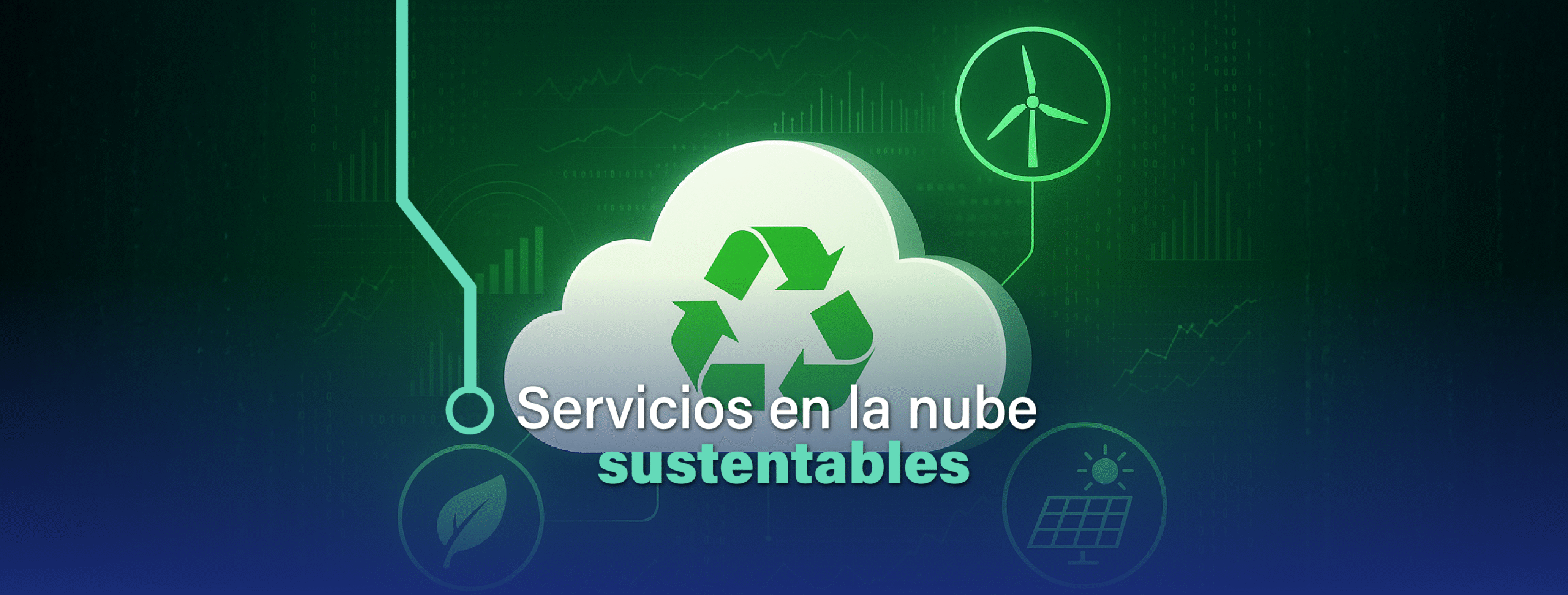GreenOps and FinOps: Efficiency, Awareness, and Sustainability for the New Digital Age
Businesses are no longer measured only by their economic profitability, but also by their for its environmental and social impact.
As a result of this view, technology areas face a double challenge: sustain the pace of digital transformation and do so in a conscious, efficient and sustainable manner.
From this context, two key approaches emerge that are changing the way organizations manage their technological infrastructures: FinOps and GreenOps.
In this article we analyze the characteristics, impacts and benefits of both, such as strategic allies of the purpose of B Companies.
GreenOps and FinOps: sustainable technological management
Before continuing, let's clarify the concepts.
FinOps, an operational methodology that combines the terms "finance" and "DevOps," seeks to maximize the value of cloud investments through collaboration between finance, technology, and business teams.
GreenOps (green operations) is an approach used to manage environmental impact through strategies and practices focused on minimizing the ecological footprint of IT infrastructure and services.
Both approaches have points of contact with the principles of triple impact, promote a more balanced business model between the economic, social and environmental aspects.
Now, let's delve into each of them.
What is FinOps
From the FinOps Foundation They explain that FinOps is a operational framework and a cultural practice that maximizes the business value of cloud and technology.
In this sense, it introduces a cultural shift in financial accountability in the cloud's variable spending model.
This helps distributed engineering and business teams achieve balance between speed, cost, and quality in their cloud architecture and investment decisions.
Additionally, it enables timely, data-driven decision-making and creates financial accountability through collaboration between engineering, finance, and business teams.
In an environment where cloud service consumption can scale rapidly, FinOps proposes collaborative and transparent management between technology, finance, and business areas..
Their goal is not only to reduce expenses, but also to make informed decisions about the use of resources, aligning technological investment with the value it brings to the business.
What is GreenOps
GreenOps is an approach that companies use to manage the environmental impact of its technological operations and ensure that decisions are based on data on carbon emissions, water consumption and other environmental impacts.
This is a perspective that seeks to minimize the carbon footprint generated by the use of data centers, cloud workloads, and connected devices.
This involves choosing suppliers with renewable energy sources and lower environmental impact, who optimize resource use to improve application performance and reduce energy waste.
Growing consumer pressure and new regulatory reporting requirements, such as Germany's Energy Efficiency Act, which mandates a 26.5% reduction in carbon emissions from 2008 levels by 2030, have opened the door to GreenOps.
According to the report GreenOps, FinOps, And The Sustainable Cloud According to Forrester, this and other regulations and initiatives around the world are promoting more sustainable energy consumption models.
These include the US SEC's Climate-Related Disclosures/ESG Investment, China's National Renewable Energy Development Plan, the Environmental Impact Assessment (EIA) Regulations, and India's National Solar Mission.

Intersection between GreenOps and FinOps
The Forrester report we mentioned earlier highlights a key point: FinOps and GreenOps They are not parallel paths, but rather convergent strategies within a modern and conscious technological management.
Both are looking for the same thing, efficiency in the use of the cloud, but they approach it from different motivations: one financial and the other environmental.
However, cost is a key indicator of sustainability, and there lies a profound intersection between the two approaches.
Let's see how FinOps and GreenOps come together:
1. Same set of practices, multiple benefits
Both approaches recommend actions such as removing idle resources, resizing instances, scheduling shutdown times, and tiering storage.
These practices have a double impact:
- FinOps: optimize operating expenses in the cloud.
- GreenOps: reduce energy consumption and therefore carbon emissions.
This shows that financial efficiency can also be a form of environmental efficiency.
2. Measurement as a common tool
Both approaches rely on data and real-time visibility to make strategic decisions, and require collaboration across technical, financial, and sustainability departments.
While FinOps measures spending and ROI, GreenOps calculates energy consumption and carbon footprint.
3. Sustainability as a by-product (or intentional)
In organizations that implement FinOps without an explicit environmental focus, efficiency measures still lead to an indirect reduction in their carbon footprint.
In contrast, organizations that intentionally adopt GreenOps integrate sustainability as part of the core value, which resonates with the profile of B Corporations.
4. Cultural change and organizational maturity
The integration of FinOps and GreenOps is not only technical, but also cultural, and requires the following factors:
- Shared governance.
- Awareness of the impact of technological use.
- Decision-making based on triple impact: economic, environmental and operational.
GreenOps and FinOps: two sides of the same coin
In a context where companies—especially B Corps—seek to balance profitability with responsibility, Efficient cloud management becomes a strategic point to reduce costs and emissions, simultaneously.
This convergence not only maximizes economic value but also enables a more conscious growth model, aligned with the sustainable development goals and our commitment to the planet.
GreenOps and FinOps: strategic allies of B values
B Corps seek to generate a positive impact not only economically, but also socially and environmentally. Responsible digital transformation is key to this endeavor.
This is where GreenOps and FinOps come in, two approaches that allow you to manage the cloud and technological resources from a perspective aligned with B values.
How do both practices relate to Model B? Through the following characteristics:
- Transparency and efficiency: FinOps makes it possible to visualize technological spending and connect IT investment with impact objectives.
- Environmental responsibility: GreenOps helps measure and reduce the digital carbon footprint, aligning with the environmental commitment of B Corporations.
- Collaborative cultureBoth approaches promote collaboration between technical, financial, and impact teams, as required by the horizontal and transparent management of a B Corporation.
- Decisions with purpose: The combination of GreenOps and FinOps enables technological decisions that consider not only economic ROI, but also environmental and social ROI.

Impact on businesses: greater efficiency, smaller carbon footprint
The adoption of FinOps allows organizations to have a greater control over cloud spending, which avoids cost overruns due to poorly sized services, idle infrastructure, or unmonitored scaling.
But its impact goes beyond savings: promotes a culture of shared responsibility, where each area understands the cost of its technological decisions and collaborates to maximize the return on digital investment.
GreenOps, however, brings to the center of the conversation an increasingly relevant aspect for business: technological sustainability.
In a context where The IT sector is increasingly contributing to global carbon emissions., rethinking the design and operation of digital architectures from an ecological perspective is an urgent need.
To provide greater precision Rebeca Grynspan, Secretary General of the United Nations Conference on Trade and Development (UNCTAD), reports that the IT sector's carbon footprint in 2020 was estimated to be between 0.69 and 1.6 gigatons of carbon dioxide (CO₂) emissions.
This result represents between 1.5% and 3.2% of global greenhouse gas emissions.
The data comes from the Digital Economy Report 2024 – UNCTAD, which highlights that at its highest level, this figure recorded by the IT industry is just below the shipping industry's total contribution to CO₂ emissions.
Faced with this scenario, GreenOps allows you to align your technology operations with your company's environmental commitments, improve your corporate reputation, and anticipate future regulations.
How to achieve the goal of reducing the carbon footprint?
The IT industry can play a significant role in reducing the global carbon footprint through the implementation of sustainable practices and technologies.
In relation to data centers, energy efficiency must be improved through the server consolidation, the use of efficient hardware, the cooling optimization and the use of renewable energies.
From a software perspective, develop and use more efficient and optimized systems.
At the hardware level, produce sustainable products with a longer life cycle, from design and manufacturing to disposal.
In terms of supply chain management, promote sustainable practices such as the selection of responsible suppliers, and the reduction of emissions in the production and distribution of components and equipment.

Benefits of GreenOps and FinOps: From Savings to Purpose
Implementing FinOps and GreenOps practices brings tangible and intangible benefits.
Among them, the following stand out:
- Greater visibility and control of technology spending.
- Reducing emissions and improving environmental performance.
- Resource optimization and operational efficiency.
- Improved financial and technical decision-making.
- Strengthening the collaborative culture between areas.
- Positioning as an innovative and responsible company.
These benefits not only improve profitability and operational efficiency, but also enhance the purpose of organizations seeking to operate under positive impact criteria.
How do GreenOps and FinOps relate to business sustainability?
FinOps and GreenOps are not isolated practices.
They are part of a new way of thinking and managing business operations in which the Economic efficiency and environmental responsibility go hand in hand.
Its adoption is a concrete example of How digital transformation can also be a sustainable transformation.
Integrating these methodologies allows companies to optimize their resources and demonstrate their commitment to a more conscious business model.
It is a model that recognizes that There is no economic growth possible without care for the environment. No technological innovation is valid without a positive impact on society.
At IT Patagonia we know that there are no impeccable companies, but what is important is that we work to generate a change of mindset that allows us to continue producing businesses that enhance this triple impact vision, from a perspective of continuous improvement.
Conclusion: Efficiency with purpose
In an increasingly competitive, changing, and environmentally demanding business landscape, FinOps and GreenOps offer concrete tools for rethinking digital operations with criteria of efficiency and responsibility.
Incorporating them not only improves technological and financial performance, but also connects companies with a more coherent and sustainable vision of the future, aligned with the values of the new generations.
As a B Corp, We consider ourselves an agent of social transformationwhich promotes the generation of training opportunities in technology, focused on the generation of quality and sustainable employment for people.
And the B certification is a tool for continuous improvement, which allows us to permanently increase our positive impact.

